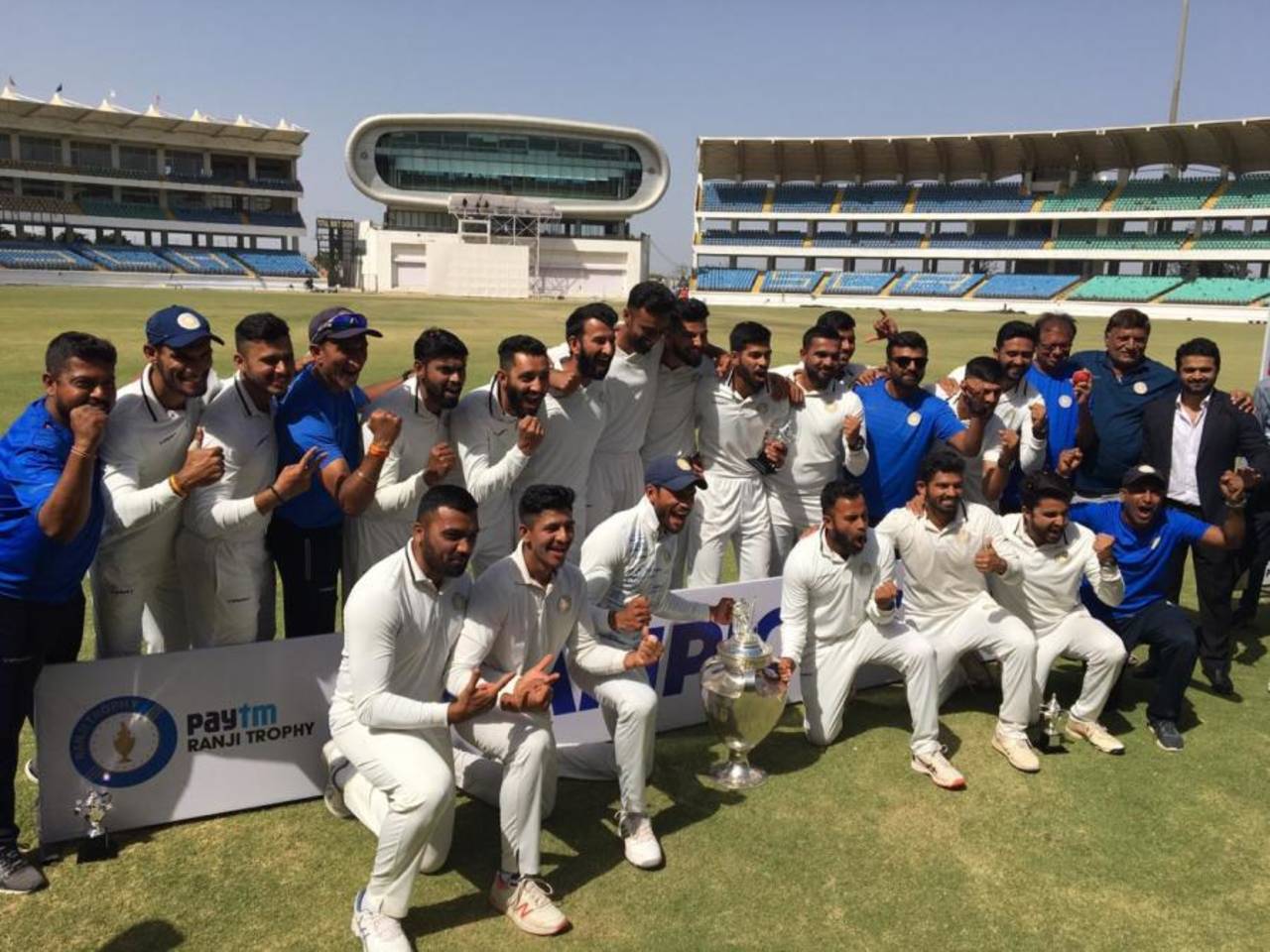The BCCI has pushed back the start of the 2021-22 Ranji Trophy from November 16 this year to January 5 next year to ensure the 38 participating teams have more time to prepare for red-ball cricket. The move follows a request from several associations to be given more time to prepare for the premier first-class competition, which was shelved in 2020-21 because of the Covid-19 pandemic. The competition will now end on March 20, 2022.
In a revised domestic calendar sent out to the state associations, the BCCI has accommodated the 50-over Vijay Hazare Trophy for much of the period the Ranji Trophy was originally set to run. This means both the senior men's white-ball tournaments will be held before the first-class season. The T20 Syed Mushtaq Ali Trophy that kicks off the senior men's calendar will run from October 27 to November 22, with the Hazare Trophy being staged from December 1-29.
The women's one-day competition, the season's original curtain raiser, will now begin on October 20, instead of September 21. This will be followed by a four-team Challenger Trophy for women, aimed at providing more game time to India's top players as well as the fringe players with an eye on the 2022 women's World Cup in New Zealand.
The domestic season will culminate with the CK Nayudu Trophy, which is now an Under-25 tournament instead of Under-23. The move will especially benefit those players who lost out 18 months of age-group cricket because of the pandemic. This tournament will be played from January 6 to April 2. In recent times, the tournament has been seen as a feeder for the Ranji Trophy.
Ranji Trophy format tweaked; players unhappy
According to the revised schedule, the 38 Ranji Trophy teams will now be slotted into six groups: five Elite (six teams each) and one Plate (eight teams). Each of the Elite group toppers will secure direct entry into the quarter-finals. The second-placed teams from each of the five Elite Groups and the topper of the Plate group will play three pre-quarter-finals to decide the other qualifiers.
While the format adds competitive edge while also making it sleeker, it also has a flip side to it. As per the earlier schedule, teams were divided into three Elite Groups and one Plate group, with Elite teams having a minimum of eight first-class games, nine in case of Plate.
The reduction to five league games in the current format also potentially leads to reduced earnings, unless the BCCI's apex committee, formed to look into the issue of player compensation, announces a significant pay hike.
So far, the players haven't heard from the board about delayed compensation for cricket missed in 2020-21 either.
Under-19 players to get an extra year
In line with not wanting to deny Under-19 players a crack at junior cricket's biggest prize - the Under-19 World Cup - the BCCI has ensured Under-19 players will be handed an extra year to make their case for the World Cup, slated to be held in the Caribbean early next year.
As per the BCCI's existing rules, a player can compete in Under-19 cricket for a maximum of four seasons. This rule has been tweaked to accommodate a fifth season to ensure something of a level-playing field for players who lost out more than a year because of the pandemic.
Meanwhile, the inclusion of the Vijay Merchant Trophy for the Under-16 boys removes any uncertainty around the tournament owing to the absence of a vaccination programme for those aged 18 or less. While no dates have been announced yet, the tournament is expected to take place in November-December 2021.
Cap on players, support staff
In an email to the state associations, the BCCI has stipulated that each team can have a maximum of 30 members, comprising at least 20 players. The number of support staff has been capped at ten. Teams have also been asked to appoint a physician, over and above the regular staff cap, for Covid-19-related issues and emergencies.
Shashank Kishore is a senior sub-editor at ESPNcricinfo
